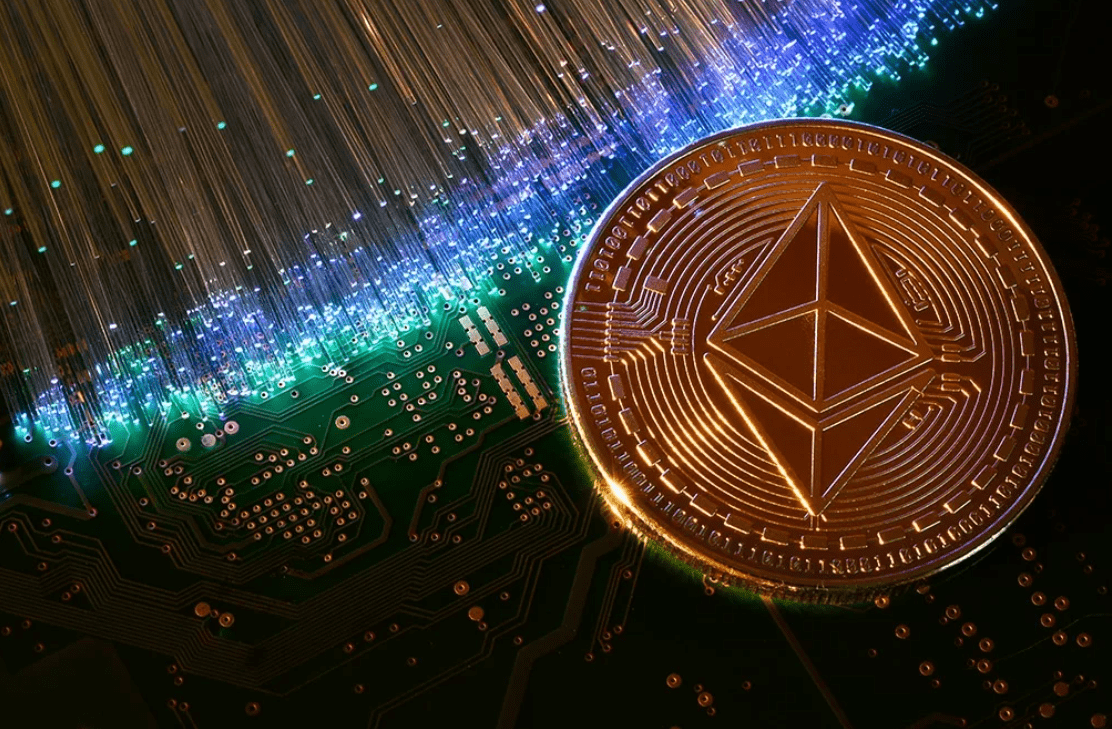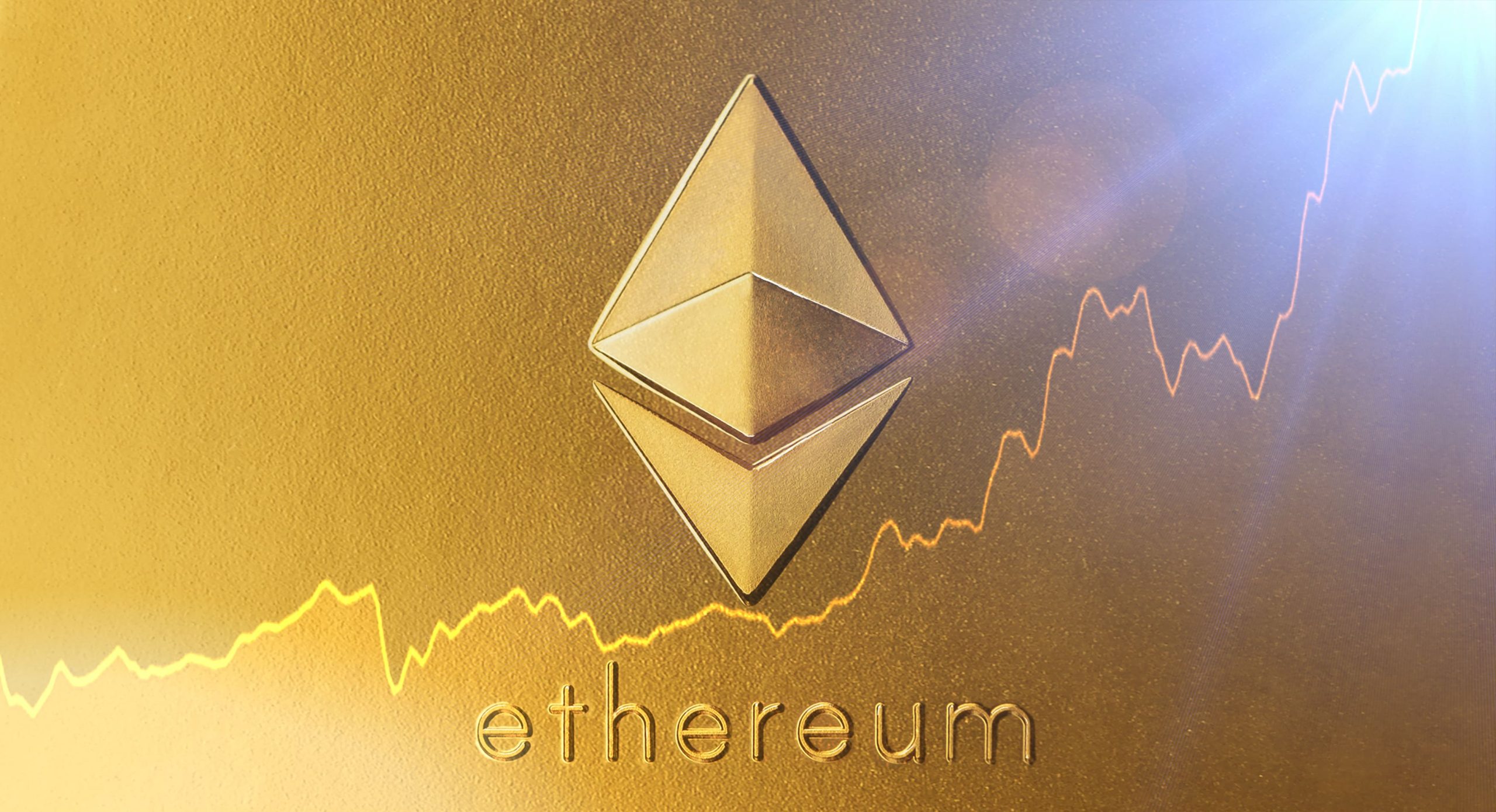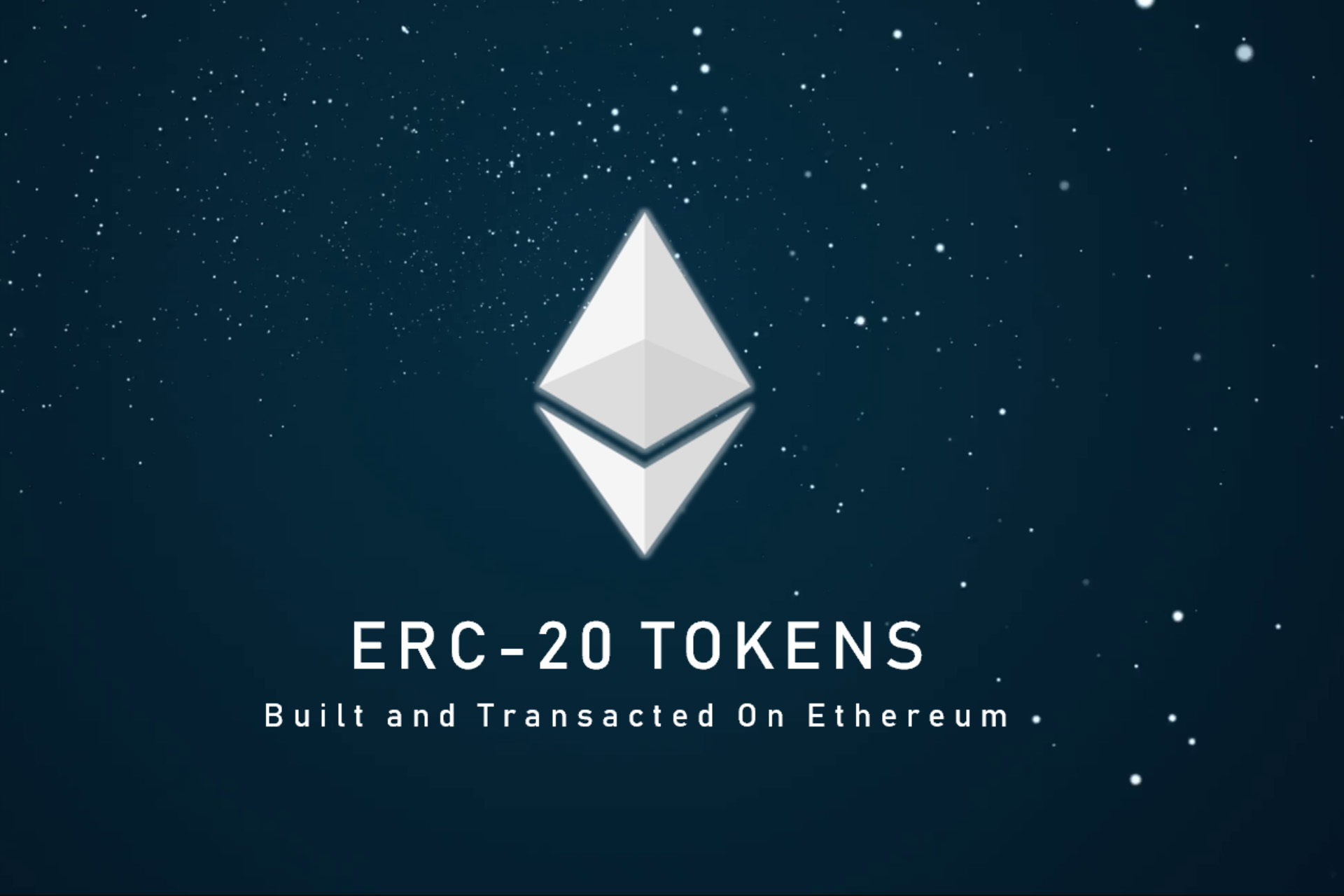Bitcoin may seem to be the main cryptocurrency, the most popular and expensive one, but it is not that simple. The market for digital currencies based on blockchain technology is much larger. For instance, Ether was introduced in 2015. It is a cryptocurrency based on the Ethereum blockchain. By 2021, it had become one of the few virtual currencies with the highest number of transactions on the register, being processed more than 1.1 million times a day. That surpassed Bitcoin by a factor of six in the number of transactions. This was reflected in the price of Ether, which saw the incredible growth in November 2021, reaching over $4,800.

Ethereum token development made Ether one of the most popular cryptocurrencies in the world.
However, contrary to popular misconceptions, Ethereum is not only a cryptocurrency but also a platform for developing tokens and decentralized applications based on blockchain and smart contracts technologies. In this article, we have gathered all the information about Ethereum token development based on the ERC20 standard. We will explain what they are, their benefits and business opportunities, as well as go over detailed instructions on how to create Ethereum tokens.What is Ethereum?
Unlike bitcoin, which is a payment system, Ethereum is something more than that. In addition to transferring payments without restrictions and control by states and banks, it allows the creation and deployment of decentralized applications on its blockchain. Ethereum development allows this blockchain platform to be more like the financial services marketplace, games, and social networks. Ethereum has been able to gain trust and popularity among investors, companies and developers because of its innovations in cryptocurrency and blockchain platforms, as well as its main features. Smart contracts and decentralized applications have built a huge platform providing an unimaginable variety of services to tens of millions of users and development opportunities for different types of businesses. Based on statistics, there are already more than four thousand DApps thanks to the capabilities of Ethereum development.Ethereum technology provides reliable and transparent communication between users and companies in its peer-to-peer network without the need to provide personal information. Distributed among multiple nodes, the database stores a chain of coded transaction information, grouped into blocks, which gives it its name. Blockchain ensures reliability and transparency of transactions. For an attempt to cheat or modify the system, most nodes must be monitored at the same time. In addition to greater anonymity than in standard systems, Ethereum is resistant to censorship. The distributed nature and lack of tools for centralized control by states and companies minimize the possibility of blockchain platform services being banned.

The popularity of Ethereum token development allows more and more people to use the services of an independent, anonymous and secure platform.
The evolution of blockchain technology and Ethereum development provides access to banking services for everyone from anywhere in the world. The basic requirement for using Ethereum is a connection to the Internet. The convenience and reliability of this service are achieved through the commercial guarantees provided by smart contract technology. It ensures that funds are transferred only when certain transparent and immutable conditions are reached. This benefits not only users but also businesses. There are many opportunities for businesses, from the creation of Ethereum tokens for ICOs and crowdfunding campaigns to making deals with foreign companies without having to worry about commissions and long processing times for international funds transfers. ICO stands for Initial Coin Offering and is analogous to an IPO or Initial Public Offering, when a company starts selling shares.Therefore, to take your business to the next level, a good option would be to turn to Ethereum token development. It is possible to start with ERC20 token development, which allows one to take full advantage of the platform, as it is the universally recognized standard in Ethereum token development. So let’s take a closer look at what ERC20 token development is.
What is ERC20?
It used to be quite a challenging task to create Ethereum tokens. It required a lot of effort and good technical skills. Each platform and token was created using individual methods and unique architecture. As a result, they all operated under their own rules and implemented their own types of smart contracts. Such features of Ethereum token development led to compatibility and support issues.To solve the existing difficulties, the Ethereum development community came up with the idea of creating standards that simplify and improve the process of Ethereum token development. Thus, in November 2015 Fabian Vogelstelle proposed a token standard that implements an API for tokens within smart contracts. The implementation of this standard allows to create Ethereum tokens that can be easily added to an exchange, which makes it possible to store them on any Ethereum-compatible wallets, buy and sell them.
Ethereum Request for Comments 20 is a standard interface for fungible or, in other words, interchangeable tokens, which can be seen as some kind of contract. The conditions of this contract are the need to implement certain mandatory and a few recommended functions. Fulfillment of these conditions makes it possible to create ERC20 token.
ERC20 token development implies the implementation of six mandatory and three recommended functions in a smart contract. They allow you to get the balance of tokens on the wallet, send tokens from one account to another, find out the total number of tokens available in the network and confirm withdrawals by checking whether there are enough tokens in the smart contract account. However, these are not all the features provided by the implementation of the standard. We’ll look at the rest of the features in more detail below.
The emergence of this standard has had an extremely positive impact on Ethereum token development. However, as with any other technology, it is necessary to know and consider the strengths and weaknesses in order to create ERC20 token correctly.

The ERC20 standard has become the most popular and reliable way to improve Ethereum token development.
The ERC20 token development process has become more convenient due to standardization, the possibility of writing smart contracts in Solidity, and the existence of a coherent development plan. However, the lower entry point means that some startups may create ERC20 tokens for ICOs, not to raise funds for project development, but to make money by deceiving investors.The great advantage of this standard manifests itself in the popularity and prevalence of ERC20 compatible tokens, that can be exchanged between each other without any problems. This makes ERC20 token development an ideal option for various trading applications. Unfortunately, the great popularity and simplicity of Ethereum token development are poorly matched by the complexities of scalability due to the limitations of consensus mechanisms. Numerous transactions may result in a strong increase in gas fees, i.e. the payment of a commission for the required computing power. However, these problems should soon be resolved when the Ethereum blockchain completes the transition to the consensus algorithm Proof-of-Stake instead of Proof-Of-Work.
In addition to ERC20, there are several other standards for Ethereum token development. For instance, ERC-721 and ERC-777. Ethereum Request for Comments 721 was invented to standardize the creation of non-interchangeable tokens and smart contracts. Non-Fungible Tokens or NFTs are invented to create unique tokens, each instance of which cannot be replaced by another similar token, unlike fungible tokens. ERC-777 is a standard designed to improve and extend ERC20 token development capabilities. However, according to Ethereum‘s official documentation, it is recommended to create ERC20 token instead of ERC-777 because of its vulnerability to various types of attacks.
Why is it worth resorting to Ethereum token development?
Let’s look at the possible applications of the ERC20 standard in Ethereum token development for business.To begin with, it is worth clarifying that tokens and cryptocurrency are not the same thing. However, these terms are often confused. Cryptocurrency can be compared to real dollars or other currency in the form of fiat money. Tokens, on the other hand, are similar to stocks or securities. Thus, securities are not money, but they can be exchanged for other securities or sold for money. In the same way, tokens do not become cryptocurrency, but they can also be exchanged for other tokens or sold, earning cryptocurrency.
Initially, ERC20 tokens were used by startups to raise funds to develop their own projects through ICOs. Tokens were issued in limited quantities and were essentially shares distributed within the Ethereum blockchain network. Surprisingly, Ethereum itself received its first funds after successfully conducting its own ICO in 2014.
Tron is one of the most popular cryptocurrencies at the moment, with the largest market capitalization. It is a platform for developing decentralized entertainment applications. However, its history began when its token Tronix (TRX) was created based on the ERC20 standard and launched on the Ethereum blockchain for an ICO in late August 2017. The initial coin offering issued 40 billion tokens and raised $70 million. After the ICO ended, Tron started using its own blockchain instead of Ethereum. Thus, the former ERC20 token evolved into a cryptocurrency. The EOS platform, which switched to its own blockchain on the first of June 2018, developed in a similar way. From these examples, it becomes clear that in order to develop successfully, a token must have a practical application. If the token is useful or the service that runs on it is popular, the demand for it and its price will tend to grow.
With the emergence of Ethereum Request for Comments 20, the entry threshold for creating new tokens and decentralized tokens has dropped significantly. This opened an extra space for startups and crypto-enthusiasts to experiment. The emergence of new ambitious projects attracted more and more active and enthusiastic users. As a result, a huge user base of the platform was formed. This led to the fact that at the moment, more than 600 thousand ERC20 token contracts and almost 3 thousand decentralized applications have already been created. They provide a huge range of services from loans and exchanges to decentralized science.
In fact, it has become quite easy for Ethereum development specialists to create Ethereum tokens. It allows businesses to open up new opportunities for growth without expending a lot of resources. The ERC20 token can be created using the popular Solidity programming language, which is very similar to JavaScript. There is also a large developer community and official documentation on Ethereum token development. In addition, smart contracts that have already been created and launched on the platform can also be of significant help in creating new tokens. Due to the fact that once launched, smart contracts become available to all network users, and many of the features that you need to implement for your project already exist in the Ethereum Virtual Machine and are available for reuse. These factors significantly reduce the time required to develop tokens and, therefore, the cost of such development.
If you have an idea for an ERC20-based project, Brivian can help you with implementation. If you have any questions about Ethereum token development, please contact us. To do this, leave a request at the end of the article or here.
How to create an Ethereum token?
In order to get a better understanding of how Ethereum tokens are structured, it is useful to know the basic steps of its development. Let’s examine in detail the process of creating and publishing an ERC20 token. To do this, we are going to need the following tools:- A text editor in which we will be writing our ERC20 token contract code, such as Sublime Text, Atom or any other editor you are familiar with;
- A MetaMask account that we can use to store and manage our tokens;
- Ethereum test network with a certain amount of test Ether. Ropsten TestNet, which can be selected in the MetaMask window, or an account in Rinkeby will do for this purpose. Next, all we need to do is to get a test Ether;
- Deployment tools. There are two most popular options: the framework for Ethereum token development Truffle or the tool called Remix, which is more suitable for the first introduction to the creation of ERC20 token. It can run directly in a browser and does not require any installation.
1. Smart contract creation
The first step in creating an ERC20 token is developing a smart contract. You should begin with creating a file with the extension .sol. Then, you need to open the file you created in the selected text editor, and now you can start writing code in the Solidity language. As we mentioned before, all Ethereum smart contracts are in the public domain after they are published. So we can go to the Etherscan website and study how smart contracts of other ERC20 tokens are written. For example, Tether USD (USDT), which is the most popular ERC20 Ethereum Stablecoin, which is a token with a stable exchange rate tied to the dollar. The Tether smart contract, like all other ERC20 tokens, implements 6 features and 2 events that are required to meet the standard, and 3 recommended features.
Ethereum token development begins with the implementation of this interface.
The recommended functions allow our contract to return the name, abbreviation and possible number of decimals of our token, which are set in the corresponding variables of the contract code. For example, Tether USD is the name, USDT is the symbol, and 18 is the decimals.The implementation of the mandatory function defines the basic actions that a token can perform. The totalSupply function is needed for the total release of tokens, ensuring that no new tokens can be created when the maximum mark is reached. The balanceOf’s logic determines the current balance of the initial number of tokens that are assigned to a particular address, usually the creators’. The transfer method serves to guarantee the transfer of assets from the primary address to customers who purchased them during the ICO period. The transferFrom’s implementation defines the logic that enables payment transactions and transfers between users. The approve function verifies the presence of tokens inside the smart contract and confirms the withdrawal of funds from the account. And finally, allowance, as well as approve, is responsible for the process of verifying the ways of transferring electronic coins and ensures that the user’s balance has sufficient funds to be sent to another address.
The Transfer and Approval events will be triggered after the tokens have actually been transferred, and the user will then be granted rights to withdraw the tokens from the account.
After creating our contract code, we can proceed to the next steps on the way to creating an ERC20 token.
2. Testing and deployment
Testing is an important part of any application or software development. It avoids errors that can lead to the loss of user confidence or money. In order to start testing, we must first get some test Ether, which we will use to test our contract in Ethereum test networks. Ropsten and Rinkeby are so-called Ethereum Faucets. They allow you to request a test Ether by specifying a MetaMask account and other necessary data.We got the MetaMask account with the test Ether. Now we can move on to compiling our contract. The fastest and easiest option is Remix. Here, we need to select and open the file with the contract code we created at the previous stage. Then on the Deploy & Run transactions tab we can click the Deploy button, having previously set the necessary parameters, such as: the appropriate compiler version, the name of our token from the dropdown list, and turning off optimization. After deploying in the MetaMask window that opens, we need to check that we are connected to the test network and confirm the transaction. At this point, you can perform the first test transaction. After clicking on it, the Etherscan website will open and there we will be able to watch the process of its execution. If we pay attention to the address of the recipient, we will see that the address of our contract is indicated.
3. Publication
After the successful completion of the test transaction, we can safely proceed to publish our created ERC20 token to the public access of the main Ethereum network. To do this, open the tab with the smart contract code of our token, where you need to click on the “verify and publish” link. After going to the opened window, fill in the necessary information about our contract and confirm the publication. The code of your contract is now available for every user to view.4. Adding the token to your wallet
In MetaMask, you can now get all the tokens you have created. To do this, select Add Token in the MetaMask window, and then in the Custom Token tab enter its contract address. Click Next and then Confirm.You should now have all of your issued tokens in your account. We can congratulate you, because you have just created and published your own token!
Conclusion
This brings us to the end of our little dive into the world of blockchain and Ethereum token development. We took a detailed look at what Ethereum is and how to create ERC20 token. We are sure that after reading this article you are ready to implement your idea, which will help your business to broaden its horizons.Brivian is ready to help you maximize your profits and avoid the pitfalls of ERC20 token development. Our team has extensive experience in Ethereum token development using this standard. Moreover, our expertise is not limited to Ethereum development, we also have proficiency in development for Binance and Tron. We are happy to answer your questions and help you with the implementation.